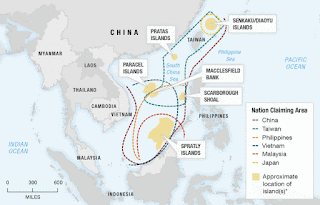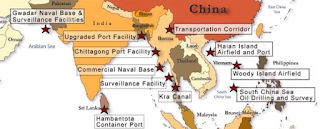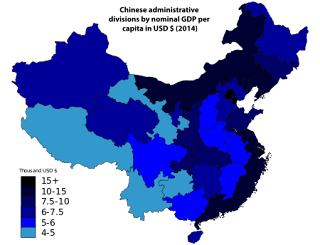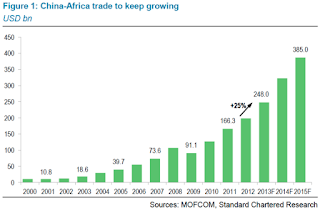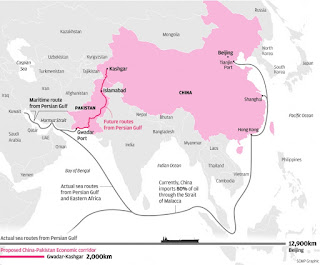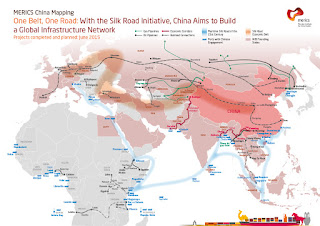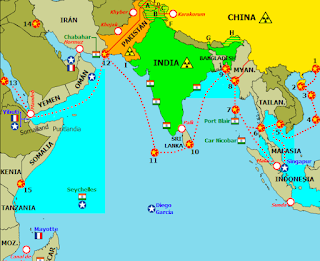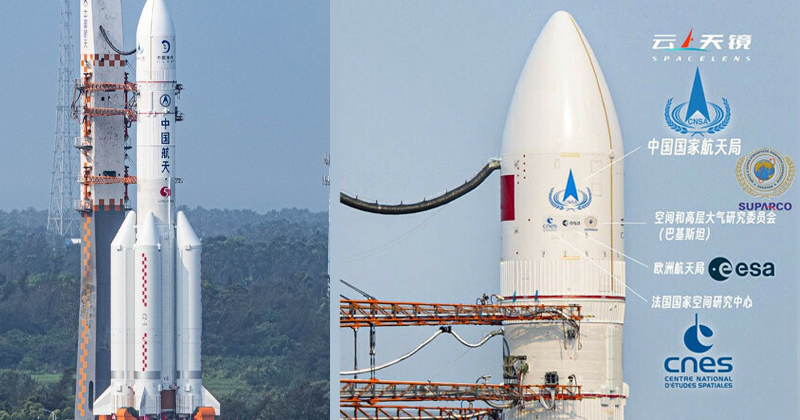Gwadar- China's Golden Goose
By Faisal Latif
2 Aug, 2016
NOTE: Please click on graphs/figures to view them in full size and understand the argument better.
I read an article by the journalist Farrukh Saleem in The News International titled Gwadar. The basic argument of this article was the Gwadar port makes no economic sense for the Chinese. As I was reading the article (shared by a friend on mine on Facebook), I noticed how unimaginative and poorly researched it was. It deducted incorrect arguments from very rudimentary factoids. The article also lacked a strategic foresight that one would expect from an veteran journalist. The article can be accessed though http://www.thenews.com.pk/print/138972-Gwadar
I would recommend you to read the article by Mr Farrukh Saleem first and then read my response. I will not mention the benefits Pakistan will enjoy through Gwadar in particular and CPEC in general as that would make this rebuttal too long.Here is my response on why Gwadar in particular and CPEC in general makes perfect sense; both economically and strategically, for the Chinese.
1. Gwadar is China's insurance policy in case of a war with US/India/Japan, as the narrow Strait of Malacca can be blocked with just a dozen ships at the most. This makes China vulnerable to a blockade and can easily be deprived of its energy, food and other vital supplies. Additionally, most of the countries that are located near the current Strait of Malacca route do not have friendly relations with China, especially due to the current South China Sea dispute. Therefore, Gwadar gives China an alternative route that is both shorter and safer in case of any conflict that may rise in the South China Sea.
2. Gwadar is envisioned to serve as an overseas base for the Chinese navy in the future, similar to US Naval Base in Bahrain that is home to U.S. Naval Forces Central Command and United States Fifth Fleet, or the Russian base in Crimea that houses the Russian Black Sea Fleet or Russian naval facility in Tartus, Syria. These bases serve to project influence, secure trade and supply routes, and maintain military dominance in regions of the world that are far beyond the geographical boundaries of these powerful nations. Therefore, it is militarily important for China to have access and naval presence near the Persian Gulf/Strait of Hormuz to secure it energy supplies and gain foothold in this strategically important location from where a large percentage of world's energy supply pass through.
3. Just like Pakistan wants to help its underdeveloped regions (KPK and Baluchistan) grow with the help of this corridor, so too does China want to economically develop its underdeveloped western/ south western regions. This corridor makes this possible as the route will bring with it the development and employment opportunities to make south-western China prosperous. China also thinks that the only way to root out terrorism in its Muslim majority Xinjiang Autonomous Region that has a large but marginalized Turkic Uyghur people is to bring them the economic benefits that the eastern Chinese regions enjoy.
The figure below makes clear the economic disparity between the eastern and western China.
4. China has made extensive infrastructure investments and long term trade deals in Africa. African exports to China includes, but is not limited to fossil fuels (one third of China's fossil fuels supplies come from Africa), agriculture (cotton, cocoa, coffee, and fish etc.), mineral ores (including the highly valuable rare earth elements). China's exports to Africa includes machinery, weaponry, electrical and consumer goods etc. The total Chinese-African trade has grown from about USD 10 billion to USD 385 billion in 15 years. With Gwadar, all this multi-billion dollars worth of supplies can be transported cheaply, quickly and safely.
5. This route cuts the time (on sea) for goods to reach China from Africa, Southern/Western Asia, and Middle East by thousands of kilometers. It does not matter how long the land route is from the east of china to the west, it is still much shorter and safer than the route through the Strait of Malacca that is currently used by China. The difference in length between the current Chinese supply route (which is 12000+ Km) with the proposed CPEC route (which is approx. 2000 Km) can be seen in the figure below.
6. China's internal economy was lagging after the Euro-Zone Crisis and Economic Recession of 2009 . China had to maintain a GDP of 6% + in order for the government to maintain its legitimacy. Initially, they started making ghost cities, roads and bridges that went nowhere. When they realized they can't build aimlessly just to boost GDP and GNP figures, they turned to overseas mega projects. Thus, in order to keep the Chinese companies afloat and keep producing their goods at the pre-recession levels (especially construction, metal, engineering etc.), a more sustainable approach was taken to keep the GDP growth above 6-7 %. This approach included massive investments in overseas mega infrastructure development projects that would be supplied by Chinese equipment made by Chinese corporation in China.
Additionally, CPEC enables China to grow its influence, its international clout, establish itself as a superpower (or the very least a regional hegemon) and keeps its corporations profitable as they get the most lucrative contracts in these projects.
7. Gwadar reduces the influence of USA in Pakistan and other countries where China has made investments.It shows other countries that if they are good to China; China would be good to them - quid pro quo! This is soft power at its finest.
8. CPEC is just a tiny part of a greater project called "One Belt, One Road" that would connect all of Asia to China through roads, ports, rails, pipelines and other infrastructural projects. This would bring China high levels of efficiency in connecting with the rest of Asia; making its imports/exports highly competitive, military highly mobile, and travel highly lucrative and inexpensive. This is reviving of the Silk Road... As in antiquity, all roads led to Rome, in the Information age, all roads will lead to Beijing.
9. Gwadar port is part of another strategy of China to create a dominance in the Indian Ocean and contain Indian and American influence in the region - The String of Pearls Strategy (Name given by US strategic circles; China does not use this terminology in its official publications). As per this strategy, China has developed and gained access to strategic ports in the Indian Ocean that strengthens it control in the ocean and contain Indian and US influence and project its naval power. The picture below shows all the Chinese ports (or Pearls) in the Indian Ocean.
By Faisal Latif
2 Aug, 2016
NOTE: Please click on graphs/figures to view them in full size and understand the argument better.
I read an article by the journalist Farrukh Saleem in The News International titled Gwadar. The basic argument of this article was the Gwadar port makes no economic sense for the Chinese. As I was reading the article (shared by a friend on mine on Facebook), I noticed how unimaginative and poorly researched it was. It deducted incorrect arguments from very rudimentary factoids. The article also lacked a strategic foresight that one would expect from an veteran journalist. The article can be accessed though http://www.thenews.com.pk/print/138972-Gwadar
I would recommend you to read the article by Mr Farrukh Saleem first and then read my response. I will not mention the benefits Pakistan will enjoy through Gwadar in particular and CPEC in general as that would make this rebuttal too long.Here is my response on why Gwadar in particular and CPEC in general makes perfect sense; both economically and strategically, for the Chinese.
1. Gwadar is China's insurance policy in case of a war with US/India/Japan, as the narrow Strait of Malacca can be blocked with just a dozen ships at the most. This makes China vulnerable to a blockade and can easily be deprived of its energy, food and other vital supplies. Additionally, most of the countries that are located near the current Strait of Malacca route do not have friendly relations with China, especially due to the current South China Sea dispute. Therefore, Gwadar gives China an alternative route that is both shorter and safer in case of any conflict that may rise in the South China Sea.
2. Gwadar is envisioned to serve as an overseas base for the Chinese navy in the future, similar to US Naval Base in Bahrain that is home to U.S. Naval Forces Central Command and United States Fifth Fleet, or the Russian base in Crimea that houses the Russian Black Sea Fleet or Russian naval facility in Tartus, Syria. These bases serve to project influence, secure trade and supply routes, and maintain military dominance in regions of the world that are far beyond the geographical boundaries of these powerful nations. Therefore, it is militarily important for China to have access and naval presence near the Persian Gulf/Strait of Hormuz to secure it energy supplies and gain foothold in this strategically important location from where a large percentage of world's energy supply pass through.
3. Just like Pakistan wants to help its underdeveloped regions (KPK and Baluchistan) grow with the help of this corridor, so too does China want to economically develop its underdeveloped western/ south western regions. This corridor makes this possible as the route will bring with it the development and employment opportunities to make south-western China prosperous. China also thinks that the only way to root out terrorism in its Muslim majority Xinjiang Autonomous Region that has a large but marginalized Turkic Uyghur people is to bring them the economic benefits that the eastern Chinese regions enjoy.
The figure below makes clear the economic disparity between the eastern and western China.
4. China has made extensive infrastructure investments and long term trade deals in Africa. African exports to China includes, but is not limited to fossil fuels (one third of China's fossil fuels supplies come from Africa), agriculture (cotton, cocoa, coffee, and fish etc.), mineral ores (including the highly valuable rare earth elements). China's exports to Africa includes machinery, weaponry, electrical and consumer goods etc. The total Chinese-African trade has grown from about USD 10 billion to USD 385 billion in 15 years. With Gwadar, all this multi-billion dollars worth of supplies can be transported cheaply, quickly and safely.
5. This route cuts the time (on sea) for goods to reach China from Africa, Southern/Western Asia, and Middle East by thousands of kilometers. It does not matter how long the land route is from the east of china to the west, it is still much shorter and safer than the route through the Strait of Malacca that is currently used by China. The difference in length between the current Chinese supply route (which is 12000+ Km) with the proposed CPEC route (which is approx. 2000 Km) can be seen in the figure below.
6. China's internal economy was lagging after the Euro-Zone Crisis and Economic Recession of 2009 . China had to maintain a GDP of 6% + in order for the government to maintain its legitimacy. Initially, they started making ghost cities, roads and bridges that went nowhere. When they realized they can't build aimlessly just to boost GDP and GNP figures, they turned to overseas mega projects. Thus, in order to keep the Chinese companies afloat and keep producing their goods at the pre-recession levels (especially construction, metal, engineering etc.), a more sustainable approach was taken to keep the GDP growth above 6-7 %. This approach included massive investments in overseas mega infrastructure development projects that would be supplied by Chinese equipment made by Chinese corporation in China.
Additionally, CPEC enables China to grow its influence, its international clout, establish itself as a superpower (or the very least a regional hegemon) and keeps its corporations profitable as they get the most lucrative contracts in these projects.
7. Gwadar reduces the influence of USA in Pakistan and other countries where China has made investments.It shows other countries that if they are good to China; China would be good to them - quid pro quo! This is soft power at its finest.
8. CPEC is just a tiny part of a greater project called "One Belt, One Road" that would connect all of Asia to China through roads, ports, rails, pipelines and other infrastructural projects. This would bring China high levels of efficiency in connecting with the rest of Asia; making its imports/exports highly competitive, military highly mobile, and travel highly lucrative and inexpensive. This is reviving of the Silk Road... As in antiquity, all roads led to Rome, in the Information age, all roads will lead to Beijing.
9. Gwadar port is part of another strategy of China to create a dominance in the Indian Ocean and contain Indian and American influence in the region - The String of Pearls Strategy (Name given by US strategic circles; China does not use this terminology in its official publications). As per this strategy, China has developed and gained access to strategic ports in the Indian Ocean that strengthens it control in the ocean and contain Indian and US influence and project its naval power. The picture below shows all the Chinese ports (or Pearls) in the Indian Ocean.
Chinese ports are denoted by yellow stars in red circle
Source; http://tehkal.blogspot.co.uk/2016/08/gwadar-chinas-golden-goose.html


